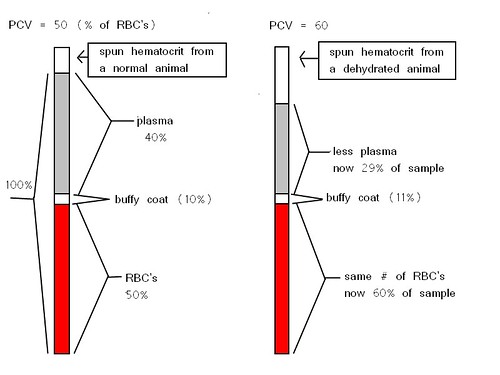Neutrophils may be counted by machines or by a technician doing a manual differential or
"manual diff". This involves taking a drop of blood and making a smear
on a slide. It is allowed to dry, then stained with Diff Quick stain.
Once the stain has dried the slide is viewed under a microscope and
evaluated for red and white blood cell morphology as well as a count of
100 white blood cells to determine what percent of cells are of each WBC
type including neutrophils, which are the most common white blood cells in dogs and cats.
The number of neutrophils may be expressed as a percent or as an absolute number which is expressed as some number per microliter. If you have a choice it is best to work with the absolute number since, with abnormal WBC counts, the number expressed as a percent can be misleading.
Below is a photo of a normal, mature, segmented neutrophil:
Neutrophils are the body's first line of defense against infection and also play a part in inflammation.
Increased neutrophils is called "neutrophilia" and may indicate:
-
Inflammation: if this is the case it is often accompanied by a
left shift.
-Stress: caused by an increase of steroids including those used as medication and usually indicated by a decrease in lymphocytes aka "lymphocytopenia".
-
Excitement: this is common in cats. If they become overly excited during the blood draw all of the cells that are normally loosely attached to the endothelial lining of the blood vessels detach and end up in circulation where they can be drawn out and counted. This means that the increase isn't "real" because there aren't really more cells being made, it's just that the ones that aren't usually counted because they stick to the blood vessel wall were counted even though in 30 minutes or so they'll go back to where they belong. If this is the case you'll see normal or slightly increased lymphocyte numbers.
Decreased neutrophils is called "neutropenia" and may indicate:
-
Inflammation: usually accompanied by a
left shift.
-Infection: especially viruses such as parvovirus. In this case other blood cell numbers will also go down in the order of their circulating lifespan.
-
Bone marrow suppression: due to illness or drugs such as estrogen, chemotherapy, ehrlichiosis

